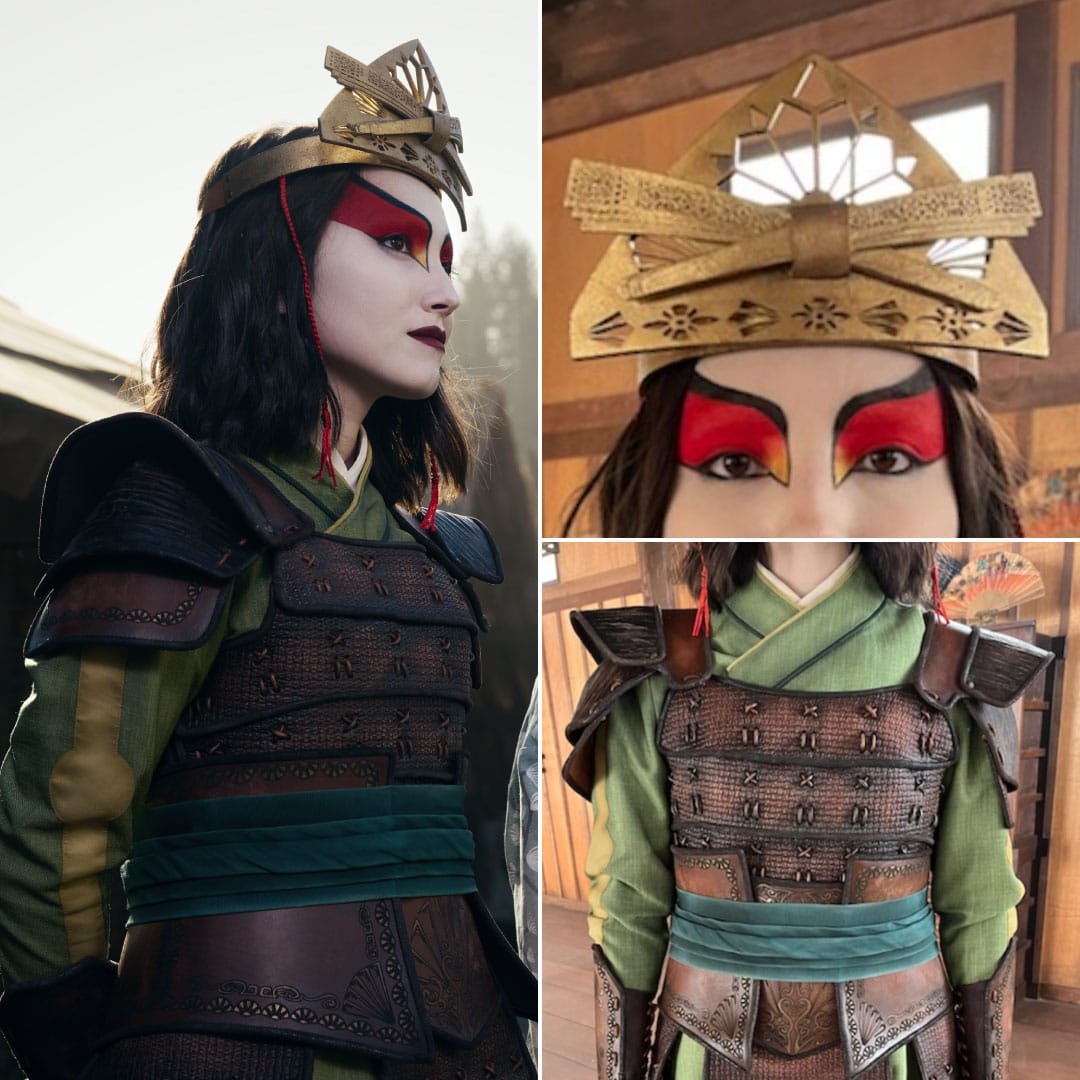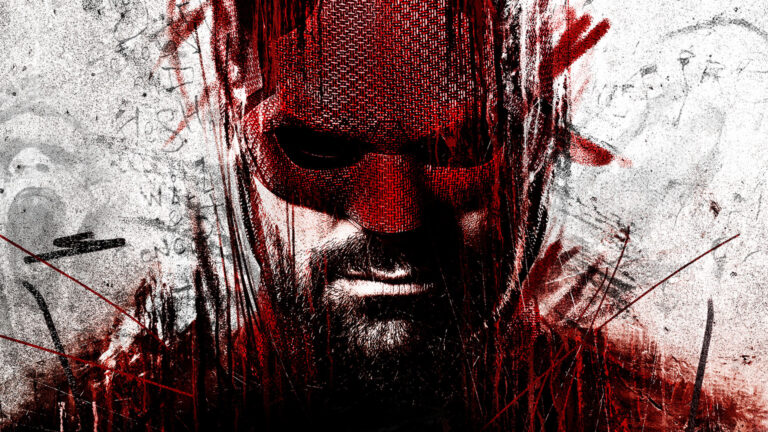Farnaz Khaki-Sadigh: The Costumes of Avatar: The Last Airbender Season One
Farnaz Khaki-Sadigh revealed the complexities of creating the costumes of Avatar: The Last Airbender Season One, visually translating the four nations and their iconic characters from animation into live-action.

Since 2005, Avatar: The Last Airbender has inspired us with compelling storytelling and its deep mid-19th century historical culture influences–including but not limited to Asia, Mesoamerica, Inuit, Eskimo, and indigenous cultures. The universally acclaimed animated series spanned for three seasons (or three books) and expanded into a sequel series and several different mediums, but after a live-action misstep in 2010, the epic franchise finally found its way to Netflix with a brand-new retelling of the world of Avatar. The live-action series of the same name premiered on February 22, 2024 and immediately captivated the audience through its outstanding cinematography, with a brilliant cast transformed into the beloved characters through the vibrant creations of the costume department. Farnaz Khaki-Sadigh, the costume designer responsible for translating the series from animation to live-action revealed the inspirations and manufacturing challenges and rewards behind the garments of Avatar: The Last Airbender: “A lot of it was research, looking into the cultural background of the nations and the characters that were originally inspired by the animation, learning and understanding their history and tradition. I studied garment history and how clothing was traditionally worn in those cultures, what influenced their color palettes and fabrics, then tried to meld them together in a way that paid homage to the animation but at the same time respectfully and authentically represented the real life cultures. That was really the first step into it.”
Visually creating a fantasy world is a momentous task, where in comparison to contemporary or even historical filmmaking each background character has to be fully developed to build the rich population within storytelling. Khaki-Sadigh and her team crafted over 400 costumes that visually defined the Air Nomads, Water Tribes, Fire Nation, and Earth Kingdom. She said, “For the Air Nomads, I decided to pick the color palettes you see in Fall season … the rusts, oranges, yellows, maroons, deeper browns, it’s just so warm and comforting. For the Water Tribes, I looked at icebergs. There are so many hues of blues and teals; it’s not just white. I also explored how the ocean reflects the light differently, creating various shades of blue. With the Fire Nation I was really inspired by volcanoes, looking at all the different shades you see when a volcano erupts, from the fiery lava to the ashes–the reds and oranges within the lava and the blacks and grays from the ash and from when the lava hardens. Then for Earth Kingdom, the inspiration came from forests and springs. So that’s sort of how I broke down the different color palettes and expanded on what was in the animation.”
“We had the Fire Nation armor shoulders wider to match the animation, but after we did some tests we found out that they limited how far they were able to move at the shoulder point. So we made them narrower, which just made the design a little bit different from the animation, but the actors were able to move freer for their bending.”
Avatar: The Last Airbender showcases the art of “bending” elements, which requires a full range of motion to visually achieve the right level of grace and power on screen. Farnaz Khaki-Sadigh explained the importance of fitting room action tests to assure practicality while wearing these intricate costumes on set: “It’s really important to make sure that it becomes almost like a second skin to the actors, otherwise they would feel out of place, taking them out of character. For example, we changed Aang’s cape; we had it fuller at the beginning but we found that it kept hitting him and didn’t flow as nicely, so we had to taper it down, re-alter the shape of it. It took a lot of math trying to figure out the patterning to get it to a place where it’s still read like a full cape but at the same time it moved with him as opposed to hindering his movements.” Then she added, “We had the Fire Nation armor shoulders wider to match the animation, but after we did some tests we found out that they limited how far they were able to move at the shoulder point. So we made them narrower, which just made the design a little bit different from the animation, but the actors were able to move freer for their bending.”
The costume design challenges for the show continued outside the fitting room. Farnaz Khaki-Sadigh explained that in order to achieve color consistency between outdoor and Volume sets were daunting–the latter’s LED lights forcing fabric changes and prolonged dying processes for many costumes: “We dyed the Fire Nation armor leathers five or six times because in daylight they had a beautiful deep shade of burgundy but in front of the Volume the color turned hot pink! In order to find the right hues to actually read red, we had to go super dark in real life … almost like a blistery color.” She added, “With Aang’s cape, we loved the color, but when we tested it [in the Volume] it was also pink … we tried about ten different fabrics before we narrowed it down to three and chose the one without a pattern with a brownish rust color that read the right hue on camera.”

Being the main protagonist of the series, Aang’s costume had to be just right. The simplicity of the Air Nomads garments meant the costume designer had to focus on texture and layering to prevent a flat look on camera, also utilizing natural fibers to represent the Air Nomad’s peaceful lifestyle. Besides the cape practicalities and color complexities, Farnaz Khaki-Sadigh recalled a peculiar challenge that followed the team throughout the filming of Season One: “Gordon [Cormier] was a growing boy, so every few weeks we had to build him a new pair of pants because he would outgrow them. I think he’s got probably around twenty pairs of pants, which probably will not fit him anymore [laughs].”
There is a beautiful visual perspective in Avatar: The Last Airbender that separates foreground and background characters, the former showcasing more vibrant shades of color and details that define their journeys away from home and unique personalities. For Katara, Khaki-Sadigh incorporated flowy water wave patterns in her parka and the under tunic inspired by Inuit art, whereas for Sokka her team implemented a more geometric design for his costume–symbolizing the character’s engineering background. His armor in particular included some Viking elements, which the costume designer revealed came from her discussions with some of the indigenous advisors on the show, delving into their trading culture and how they would build clothing and tools based on what they had access to–from leathers to bones. She said, “We built all those little rings and hand sewn them into the armor’s leather, creating a sort of chainmail look. We then casted the shoulders to look like metal, taking that element from the fact that there were Fire Nation ships that have basically been abandoned, so he would have been able to use the metal from them to create a protective layer for himself because he’s the warrior of the tribe.”

The show had yet another gorgeous display of fantasy period costume design with Suki and the Kyoshi Warriors. From the golden headpieces to the intricacies of the armors, Farnaz Khaki-Sadigh delved into the process for making those samurai-inspired costumes: “In my research, I came across a group of female samurai warriors called Onna-Bugeisha, which was my inspiration for the Kyoshi warriors. I found this beautiful leather that had this basket weave print on it which became our base for the armor, very traditional for the style of Japanese samurai armors. The headpieces were 3D printed and they all had their own unique geometric fan pattern on them, then we painted them and wrapped the leather straps around with five different layers of hand braided braids, creating these tassels at the end of it.” She then revealed a fascinating fact about Suki’s costume: “The fan that crosses in front of her headdress is actually a vintage fan that we took apart and used to create the front … It had such a beautiful pattern and texture. Also, if you look closely at the corset portion on the bottom panels of the armor, you can spot small little geometrical fans that are laser etched onto the leather to create a little bit more texture and detail onto it.”

Among the Fire Nation, two characters really drove the villainy side of the tale in Season One–on one end Zhao, an ambitious commander with a personal agenda, and Prince Zuko on the other, the heir to the throne who is navigating an uncertain path between his devotion to his people and the moral complexities of war. Farnaz Khaki-Sadigh’s team created several looks for the two villains, incorporating symbolic elements that defined their personas: “There’s something just so mysterious about Zhao. He sort of beats to the tone of his own drum so we incorporated his own personal crest, different from the rest of the Fire Nation. If you look at the details of his armor, on his gauntlets and on the skirt panels, even on his shoulder crest when he ends up wearing the [Admiral] cape, there is a different pattern that still has a flame weave to it, but it’s very unique. When he became Admiral, we made a more regal and powerful version of the costume inspired by the traditional Roman conquerors.” Then she delved into Zuko’s designs: “He goes through a lot of changes, personality and emotionally. He’s the man of many changes … he had more changes than any of our cast had, but I think the biggest thing for us was his armor. I wanted to make sure that it was regal prince-like, it stood out in comparison to the other Fire Nation armors, but at the same time, it was still part of the brigade. He’s holding onto so much tradition. He has this overwhelming struggle of what he personally believes and what is expected of him. His armor is not just like a physical thing, it’s also a metaphorical armor; he hides behind this armor to portray something that is expected of him, but yet he’s not sure if that’s who he is yet. We added a bit more layers to him with his armor, doubled the shoulders and three or four panels on his armor to add a little bit more rigidity to him.”

With Avatar: The Last Airbender renewed for two more seasons, the costume designer confessed she looks forward to designing Ba Sing Se and Ember Island and overall further developing the characters through more cultural history exploration. This interview barely scratches the surface of the team’s immense work, so if you crave more behind-the-scenes, make sure to follow Farnaz Khaki-Sadigh on Instagram.





